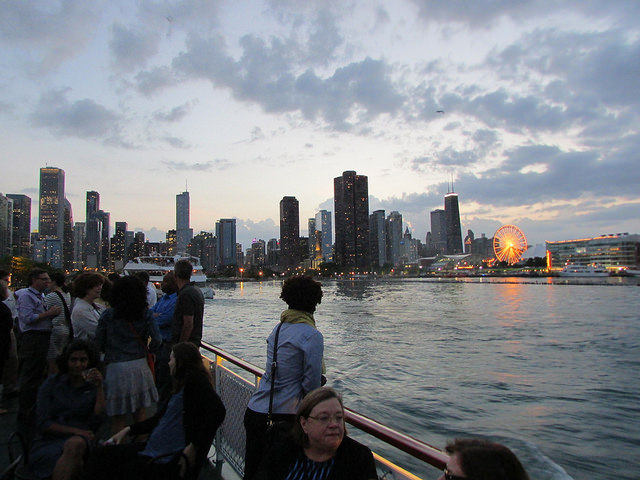
Livable cities are becoming a science, but civic engagement is still an art
Photos by Emily Munroe, 8-80 Cities.
What do bike lanes and parklets have to do with supporting informed and engaged communities, Knight Foundation’s mission? Plenty, it was clear from the “8-80 Cities Forum: The Doable City” held this week in Chicago, attended by civic innovators from 19 communities where John S. and James L. Knight once owned newspapers.
“The Doable City” was a cornucopia of strategy and tactics to make cities more livable, through walking, biking and green spaces. Those tactics attract talent to cities, create economic opportunity and keep metro areas from collapsing under the weight of cars commuting from ever-expanding suburbs.
Community engagement, though, is the thread that runs through the livable city and weaves into Knight strategy. People mobilize their neighborhoods for innovations that make cities more livable. Enlightened city governments find innovative ways of consulting their citizens. And there are signs that community engagement in livable cities is producing an innovative new generation of engaged community leaders and citizens, the foundation of a healthy democracy.
While building a livable city is becoming a science, community engagement remains an art, striving to be a science. Sometimes literally: “(Park)ing Day” started as a San Francisco art project by John Bela, who put $0.25 in a meter, moved a bench and tree into the leased parking place, and put a sign on the meter encouraging others to contribute.
Parking Day became a global meme, but not before Bela’s Rebar, a San Francisco art and design studio, packaged it as a how-to for export, and tied it to the broader strategic theme: using public space for people not cars. Ultimately, it sparked “Living Innovation Zones” in San Francisco, and a consultative project to shape Market Street.
Matt Tomasulo is someone else who felt his neighbors were relying too much on their cars. He put signs up at intersections in Raleigh, N.C., saying “7 minutes walk to downtown,” recognizing people were deterred by distance but not time. After a couple of influential articles, the city embraced the signs, and now close to 150 cities are doing something similar. Walk (Your City) has started building out the initiative with QR codes pulling up mobile itineraries, and participants adding their favorite locations to the route.
Once city governments embrace livable cities, it becomes more a science than an art, and The Doable City forum provided a virtual playbook. Portland didn’t use to be Portlandia; a decade ago, a bicycle rack might be a sawhorse on the third floor of a parking garage. But now, the two-wheeled city is contributing to the encyclopedia of bikeability.
The Chicago Park District, for its part, has developed a constituent relationship management system through its “Park Points” program, which provides a level of analysis of its users that the private sector would envy. Along with techniques for community engagement: think free snacks, hula hoops—and weekend sessions, not evenings when many of those most affected can’t make it. The push was supplemented by mining of big data that showed how much local parks increased property values.

Certainly, the forum was a grab bag of techniques for building livable cities, with ideas from participants and speakers alike. For example, practitioners described how demand for a walkable downtown might not be visible until tried in a small area.
Yet an intriguing question is whether community engagement in livable cities is producing the next generation of citizens, new leaders and participants in democracy. In Detroit, the Lower East Side Action Plan (LEAP) embodies the range of community involvement. Sparked by citizens in neighborhoods who felt they were not getting attention from the city, it was ultimately embraced by the city government and will be integrated into the Detroit master plan. And LEAP Program Director Khalil Ligon ran for City Council.
While many perceive voting as the gold standard of community engagement, others suggest there is another dimension.
“The next generation cares about those ways of engaging that show results; they may think that showing up for yoga in their local park means more than voting,” especially if it leads the city to improve the park, said Alex Morrison, executive director of the Macon-Bibb County Urban Development Authority.
Ideally, people would both vote and engage even more directly in their communities. But the fact is, the formula for engaged communities is changing as fast as the formula for informed communities, in the digital age. What is constant, for Knight Foundation, is faith in citizens of those communities to determine their own interests.
Andrew Sherry is vice president of communications at Knight Foundation.
Recent Content
-
Community Impactarticle ·
-
Community Impactarticle ·
-
Community Impactarticle ·


